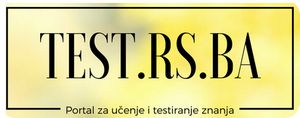
Every now and then I have an application that is subject to a secrecy order by the government that restricts disclosure of the invention and prevents the publishing or granting of a patent. I noticed that a current application being held up really doesn’t seem to contain sensitive information but the application may have triggered the order itself by making a reference in the description that one of its many uses could be by the military. It would be analogous to an invention for an improved water bottle that you might describe as being beneficial to the military (a group that often needs bottled water in far away places) but that really is ordinary, everyday technology.
If you don’t know, the Invention Secrecy Act of 1951 requires the government to impose secrecy orders on certain patent applications that contain sensitive information, thereby restricting disclosure of the invention and withholding the grant of a patent. This requirement can be imposed even when the application is wholly created and owned by a private individual or company without government sponsorship or support.
There are several types of secrecy orders which range in severity from simple prohibitions on export (but allowing other disclosure for legitimate business purposes) up to classification, requiring secure storage of the application and prohibition of all disclosure. A secrecy order withholds the grant of a patent, orders that the invention be kept in secrecy and restricts filing of foreign patent applications.
It seemed to me that the number of secrecy orders has been on the rise. It turns out, I’m not the only one that thinks the government is keeping more secrets since 9/11. At the end of fiscal year 2006, there were 4942 secrecy orders in effect, some of which have been in effect since the 1930s. Even the NSA had nine of its patent applications blocked in the fiscal year to March 2005 against five in 2004, and none in each of the three years up to 2003.
This week, I received a note from a reader about information on secrecy orders posted by the Federation of American Scientists (FAS), a group formed in 1945 by atomic scientists from the Manhattan Project who felt that scientists, engineers and other innovators had an ethical obligation to bring their knowledge and experience to bear on critical national decisions, especially pertaining to the technology they unleashed, i.e., the Atomic Bomb. Endorsed by 67 Nobel Laureates in chemistry, economics, medicine and physics, FAS addresses a broad spectrum of issues in carrying out its mission to promote humanitarian uses of science and technology.
Secrecy orders provide a security procedure to prevent technical data contained in a patent application from being disclosed in a manner that would be detrimental to the national security. Secrecy orders are imposed by the PTO upon specific recommendation by defense agencies, including the Army, Navy, Air Force, National Security Agency, Department of Energy and National Aeronautics and Space Administration.
The PTO conducts an initial security screening of all patent applications. Government-owned applications are not reviewed by the PTO for technical content. It is the responsibility of the cognizant defense agencies to review their own applications and recommend a secrecy order to the PTO where appropriate.
Applications in which there is no apparent government property interest are made available by the PTO to defense agencies for their inspection when, in the opinion of the Commissioner of Patents, disclosure might be detrimental to the national security. If, upon inspection, a defense agency determines that disclosure “would be detrimental” to the national security, it may recommend that the Commissioner of Patents place a secrecy order on the application.
When the Secrecy Order issues, the law specifies that the subject matter or any material information relevant to the application, including unpublished details of the invention, shall not be published or disclosed to any person not aware of the invention prior to the date of the Order, including any employee of the principals except as permitted by the Secrecy Order. The law also requires that all information material to the subject matter of the application be kept in confidence, unless written permission to disclose is first obtained from the Commissioner of Patents and Trademarks except as provided by the Secrecy Order. Therefore, the subject matter under Secrecy Order is to be safeguarded under adequate protection to prevent access by unauthorized persons.
I suppose we should not get too worked up about this given the lengthy history. Concerns about invention secrecy and national security date back to the First World War. In an effort to address the government’s concerns, Congress passed the act of October 6, 1917. The Invention Secrecy Act of 1951 created 35 U.S.C. sections 181 through 188, entitled Secrecy of Certain Inventions and Filing Application in Foreign Countries. Section 181 deals with the conditions set forth by a secrecy order, namely that the order shall last one year, or in the event of war, for the duration of the hostilities plus one year, on in the time of a national emergency (as declared by the president), for the duration of the emergency plus six months, all orders being renewable.
Section 181 also sets out that the applicant may appeal the issuance of a secrecy order to the Secretary of Commerce. Section 182 provides that in the event of an unauthorized disclosure of the contents of a secret patent, the inventor forfeits all rights to a patent to which he might have otherwise been entitled. Section 183 outlines the conditions for an inventor’s right to compensation, which is valid for six years from the date of issue on the patent, and includes compensation for government use, and for damages caused by the secrecy order.
Section 184 states that any applicant must not file in a foreign country for six months after filing in the United States, to allow proper review of the invention for its relevance to national security. Section 185 applies the same penalties for foreign filing as for an unauthorized disclosure (as outlined in section 182). Section 186 describes the penalties for any violation of the secrecy order, which are up to $10,000 or two years in prison, or both. Section 187 exempts officers and agents of the United States from these prohibitions. Section 188 lists the persons who may wield secrecy orders, which include the Atomic Energy Commission, Secretary of Defense, Secretary of Commerce, and the heads of any government agencies the President designates.
by Stephen Jenei






